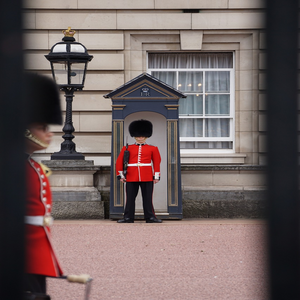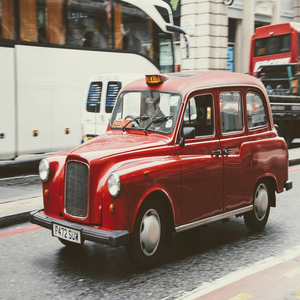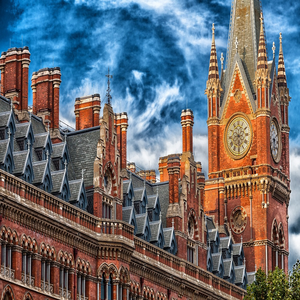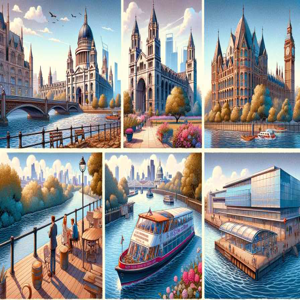WELCOME TO London
The capital of Great Britain, a city of great historical significance and interest and a stronghold of English traditions, London is the most popular destination for the British "excursion." Seeing the dramatic royal guards, hearing Big Ben chime, feeding the ravens in the Tower, and surveying the City from the London Eye are the must-do activities for the capital's sightseers (as is the traditional "Friday drink" in overcrowded Soho pubs).
There are always more surprises in one of the greenest capitals in Europe, where each district has its park or even several. On the way to Trafalgar Square, you can find yourself in India or Chinatown. Suddenly you enter a hipster market: an alley lined with shops, strange clothes, and comics in a tourist center, somewhere in Westminster or South Camden.
With so much to see, don't miss some of the most exciting attractions in London like The Tower of London and the Crown Jewels, a River Thames cruise, The London Eye, St. Paul's Cathedral, Buckingham Palace, Kew Gardens, Little Venice: Regent's Canal Waterbus Boat Trip to Camden. If situated in London, highly recommended trips outside the City would be a tour to the Cotswolds, Stonehenge, Windsor Castle, and Oxford University.
Not enough? Here's another reason for you: many fascinating museums with free admission.
Not enough? It is worth a visit just because London is the birthplace of Sherlock Holmes.
Is this not enough? Then - read it by letter: there is always a delicious beer in London!
"Excuse me, where is Big Ben?"
The city metro is divided into zones:
Inner London is in the central circle of zones 1-2.
The next circle (zones 3-4) already covers several dozen areas, including "sports famous" to the whole world Wimbledon and Wembley, Greenwich ("the capital's sea gate," the only remote area where there are enough monuments for a full day of inspection), Tottenham and other.
The last circle of zones 5-6 encircles Greater London; this includes the nearest suburbs and Heathrow Airport. Here it is concentrated in "the same London."
So, there are three historical centers (in Inner London, of course, since most of the Outer London remained in forests and swamps until the beginning of the 20th century) from where the City grew
. On the left, north, Thames. On the right - Southwark, Westminster, and the City connected to them by the Tower Bridge (no epithets: we reverently walk, look, blown away by a heavy wind). The city center on the north bank has almost no monuments preserved before 1666, the year of a grandiose fire. The southern coast generally saved only a few ancient monuments and left great memories for itself.
City and Tower Hamlet
In the City, London appears gloomy and majestic ( the bulk of St. Paul's Cathedral, St. Bridge Church) and office and modern: the skyscrapers of Broadgate Tower, St. Mary Ax, etc., are added to it. In both areas there is not much housing for tourists, apartments predominate. Such rooms or apartments quickly disperse.
Westminster
West of the City is another historic center, Westminster; busy and in places much less neat. It occupies a vast territory (from Camden in the north to the Thames in the south), includes the most famous city parks (Green Park, Hyde Park, Holland Park, Kensington Gardens, Regent's Park, and St. James's Park) and the most prestigious quarters, which are sometimes called separate areas: Belgravia, Covent Garden with its line of theatres, Soho, Mayfair, Marylebone. It is useless to list all the sights of Westminster: Trafalgar Square, the royal residence at Buckingham Palace, the Houses of Parliament with its Big Ben, Westminster Abbey, and Tate Gallery. This is another London from the cover. Most touristy streets: Whitehall, Baker Street, Oxford Street, Drury Lane, Piccadilly, Fleet Street
At the same time, winding along the poorly lit alleys around the Royal Opera House (like the quarter, the theatre is called Covent Garden ), you risk getting into a puddle of suspicious origin with both feet. Or, leaving a store on one of the main streets, step on a homeless person who will sleep for the night, wrapped in a sleeping bag, right under his windows.
There are many hotels in Westminster; you can find a more or less decent option with hard work.
Camden
North of the City and Westminster stretches Camden - an area that must be seen to fall in love with London. After the crowds in Westminster, it breathes deeply here - it is a calm, respectable, historical (south side, Bloomsbury), green area. Many squares were laid out instead of parks in the Georgian era (Queen Square, Russell Square, Fitzroy Square, Bloomsbury Square, and Bedford Square). And the square-park Lincoln's Inn Fields on the border with Westminster is considered the prototype of Central Park in New York.
Here, in the British Museum, one of the most significant collections of antiquities in the world is kept, and most of the faculties of the University of London are concentrated in Camden. The King's Cross station complex, from the non-existent platform of which the train to Harry Potter University departed, is also located in Camden. As in other parts of London, the buildings of the 18th and 19th centuries alternate with skyscrapers and residential areas. It is also a district of London-style markets: with an abundance of cheap souvenirs, simple food, and youth clothing of a controversial look and quality but exceptionally cheerful.
Settling somewhere in Bloomsbury, you can visit the British Museum almost daily and take walks in Westminster and the City. However, many chain hotels are here, so the average price tag is relatively high.
In other areas of Inner London on the West Bank of the Thames, we will see primarily respectable residential areas with low-rise buildings, modern theatres, parks, the world-famous stadiums of London football clubs, shopping centers, and many restaurants. Hotels here are much cheaper because you can't get to the main attractions on your own two feet.
South coast
There are fewer sights in Inner London on the other side of the Thames; they are mainly located across the river from the Tower - in Lambeth: The Eye of London, Waterloo Station, and the central public gardens of the empire in the 17-19 centuries Vauxhall Gardens, Shakespeare's Globe Theater, medieval City Cathedral, Imperial War Museum. Thrifty tourists also prefer to settle here - the more profound to the north, the more economical.
London cannot be called a safe city for tourists. So, guides always advise to be careful and not to meddle in the quarters of Outer London. On the other hand, you are even more at risk from pickpockets and phone thieves (thefts are expected when the phone is snatched at the subway exit - in the area where it starts to pick up a signal).
Even more to beware of public transport. Suppose London motorists watch the road and pedestrians. In that case, the drivers of the famous double-decker buses make dangerous maneuvers at crowded intersections during the day and dashingly drive at night. Therefore, at night, the road in the center should be crossed only when you are convinced that not a single "red" loom on it.
London's Accessibility for people with disabilities and seniors
London continues to improve Accessibility for travelers. The City's inclusive design, such as step-free access, ramps, and smooth surfaces, ensures that visitors can quickly access the capital's transport network, top sights, and accommodation.
Inclusive for all London transportation
London Underground trains
The London Underground network offers incredibly accessible facilities and step-free access. However, not all London Tube stations are fully accessible, so check the Transport for London (TfL) journey planner before you travel.
More than 60 Tube stations offer step-free access for wheelchair users, with Tube-level platforms and manual boarding ramps.
Tactile markings on many platform edges, contrast-color station facilities for visually impaired travelers, audiovisual announcers, and information points at most stations. The Victoria, Metropolitan, Circle, District, and Hammersmith & City lines all have highly accessible Tube trains.
TfL offers a range of accessible travel guides for use during your trip:
- Audio Tube map
- Tube tunnels map [PDF 1.35MB]
- Large-print Tube map [PDF 779KB]
- Step-free Tube map [PDF 658KB]
- Tube map for avoiding stairs [PDF 452KB]
- Colour-blind-friendly maps [PDF 555KB]
- Accessible-toilet map [PDF 299KB]
London Overground and trains
of TfL's London Overground services provide accessible facilities for disabled passengers, including audiovisual information, wheelchair ramps, wide-access doors, and grab rails. Helpful staff is available to assist with your journey, and registered assistance dogs are permitted to travel on all Overground London trains.
If you're planning to travel to London via an alternative train operator, read National Rail Enquiries' information for disabled passengers, which provides accessibility guidance, including travel assistance, station facilities, and discounted fares.
Tube-free London transport
London buses
There are accessible buses across 700 London bus routes, all fitted with low-level floors, wheelchair ramps, and audiovisual announcers. Wheelchair users can travel free of charge on all Transport for London buses, and registered assistance dogs are also welcome on board.
Docklands Light Railway (DLR)
The Docklands Light Railway (DLR) is one of London's most accessible forms of public transport, with level access for wheelchair users and elevators or ramps to platforms at all stations. It also aids include tactile marking, wheelchair bays, audio, visual announcements, and assistance animals are permitted to travel onboard.
River buses
You can enjoy sailing down the Thames on a river bus. Most piers offer disability-friendly platform access for people in wheelchairs, and plenty of services provide wheelchair toilets and ramps.
Thames Clippers' boats are disabled-friendly, with audio narration, inclusive of all toilets, and visual information available at the pier. Assistance animals are also permitted.
You can enjoy a sightseeing cruise with iconic attractions such as the London Eye, Big Ben, and Tower Bridge with City Cruises, which offers a 50% discount on tickets for wheelchair users and one friend. At the same time, blind passengers travel free of charge.
Wheelchair friendly London trams
London trams are highly accessible, with priority seating for disabled and elderly passengers, level access on the platform, wheelchair-accessible buttons, and an emergency intercom system to contact the driver for assistance. Travel is free of charge for wheelchair users, and there are tactile markings along the platform edge for visually impaired visitors to London.







